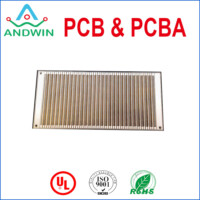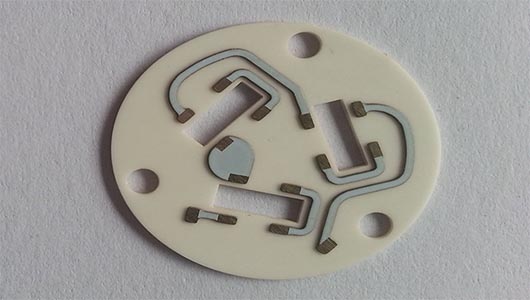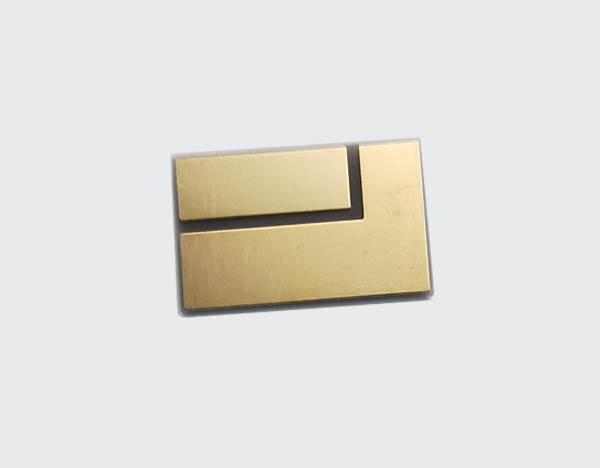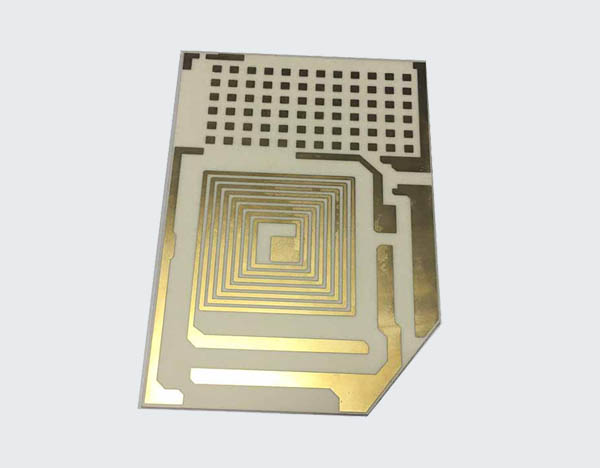Ceramic capacitor pcb footprint
Designing Optimal PCB Footprints for Ceramic Capacitors
Designing optimal PCB footprints for ceramic capacitors is a critical aspect of ensuring the reliability and performance of electronic circuits. Ceramic capacitors, known for their stability, low cost, and wide range of values, are ubiquitous in modern electronics.
However, the effectiveness of these components is heavily influenced by the design of their printed circuit board (PCB) footprints.
A well-designed footprint not only facilitates proper soldering and placement but also minimizes potential issues such as parasitic inductance and capacitance, which can adversely affect circuit performance.
To begin with, it is essential to understand the specific requirements of the ceramic capacitors being used.
These requirements include the capacitor’s size, shape, and lead configuration. Standard ceramic capacitors come in various package types, such as surface-mount device (SMD) packages like 0402, 0603, 0805, and 1206. Each package type has distinct dimensions that must be accurately reflected in the PCB footprint to ensure a secure and reliable connection.
One of the primary considerations in designing a PCB footprint for ceramic capacitors is the pad size and spacing.
The pad size should be large enough to accommodate the capacitor’s terminals while providing sufficient area for soldering. However, excessively large pads can lead to issues such as tombstoning, where the capacitor stands on one end during soldering due to uneven surface tension.
Therefore, it is crucial to follow the manufacturer’s recommended pad dimensions and spacing guidelines to achieve optimal results.
In addition to pad size, the pad shape plays a significant role in the soldering process.
Rectangular pads are commonly used for ceramic capacitors, as they provide a larger surface area for solder adhesion compared to circular pads. This increased surface area helps to ensure a robust mechanical and electrical connection. Furthermore, the use of rounded corners on rectangular pads can reduce stress concentrations and improve solder joint reliability.
Another important aspect to consider is the solder mask clearance.
he solder mask is a protective layer applied to the PCB to prevent solder bridging and short circuits. Ensuring adequate clearance between the solder mask and the pads is vital to avoid solder mask encroachment, which can interfere with the soldering process. Typically, a clearance of 0.1 mm to 0.2 mm around the pads is recommended to achieve a balance between protection and manufacturability.
Thermal relief is another critical factor in designing PCB footprints for ceramic capacitors.
During soldering, the heat must be evenly distributed to prevent thermal stress and potential damage to the capacitor. Thermal relief pads, which are connected to the main copper plane through narrow traces, help to control the heat flow and ensure a uniform temperature distribution. This approach minimizes the risk of thermal shock and enhances the overall reliability of the solder joints.
Moreover, the placement of ceramic capacitors on the PCB should be carefully considered to minimize parasitic effects.
Placing capacitors close to the power supply pins of integrated circuits (ICs) helps to reduce parasitic inductance and improve decoupling performance. Additionally, maintaining a consistent orientation for all capacitors can simplify the assembly process and reduce the likelihood of placement errors.
In conclusion, designing optimal PCB footprints for ceramic capacitors involves a meticulous consideration of various factors, including pad size and shape, solder mask clearance, thermal relief, and component placement. By adhering to these guidelines and leveraging manufacturer recommendations, designers can ensure reliable soldering, minimize parasitic effects, and enhance the overall performance of their electronic circuits. The attention to detail in footprint design ultimately contributes to the longevity and reliability of the final product, underscoring the importance of this often-overlooked aspect of PCB design.
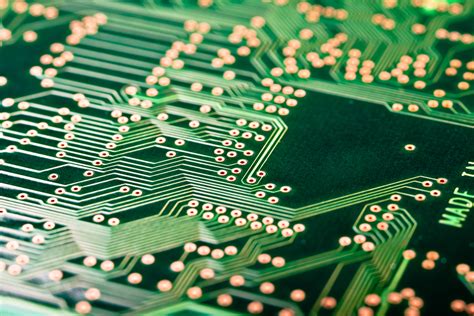
Common Mistakes in Ceramic Capacitor PCB Footprint Design
Designing a printed circuit board (PCB) involves meticulous attention to detail, especially when it comes to the placement and footprint of components like ceramic capacitors. Despite their seemingly straightforward nature, ceramic capacitors can present a range of challenges that, if not properly addressed, can lead to significant issues in the final product.
One common mistake in ceramic capacitor PCB footprint design is the improper sizing of the pads.
Designers often underestimate the importance of pad size, which can lead to poor solder joints and unreliable connections. Ensuring that the pad size matches the capacitor’s specifications is crucial for maintaining the integrity of the solder joint and ensuring the component’s functionality.
Another frequent error is the incorrect placement of the capacitor on the PCB.
The placement should minimize the loop area to reduce electromagnetic interference (EMI) and ensure optimal performance. Placing the capacitor too far from the IC it is supposed to decouple can lead to increased inductance, which can degrade the capacitor’s effectiveness. Therefore, it is essential to place the capacitor as close as possible to the IC’s power pins to minimize these issues.
Additionally, designers often overlook the importance of thermal relief in the PCB footprint design.
Without proper thermal relief, the soldering process can become problematic, leading to cold solder joints or even component damage. Thermal relief patterns help manage the heat distribution during soldering, ensuring a reliable connection. Therefore, incorporating appropriate thermal relief patterns in the footprint design is essential for maintaining the integrity of the solder joints.
Furthermore, the orientation of the ceramic capacitor is another aspect that can lead to mistakes.
Incorrect orientation can affect the capacitor’s performance, especially in high-frequency applications. Ensuring that the capacitor is oriented correctly according to the PCB layout and the circuit’s requirements is vital for optimal performance. This involves paying close attention to the capacitor’s polarity, even though ceramic capacitors are typically non-polarized, to ensure consistency and reliability in the circuit design.
Another common mistake is neglecting the impact of the PCB’s layout on the capacitor’s performance.
The layout can significantly influence the capacitor’s behavior, especially in high-speed or high-frequency circuits. Designers should consider factors such as trace width, spacing, and the overall layout to ensure that the capacitor performs as intended. This involves careful planning and simulation to identify potential issues and address them before finalizing the design.
Moreover, designers sometimes fail to account for the manufacturing tolerances of ceramic capacitors.
These components can have variations in their dimensions and electrical characteristics, which can affect their performance in the circuit. Ensuring that the PCB footprint accommodates these tolerances is crucial for maintaining the reliability and performance of the final product. This involves working closely with component manufacturers and understanding the specifications and tolerances of the capacitors being used.
In conclusion, designing a PCB footprint for ceramic capacitors involves careful consideration of various factors to avoid common mistakes. Proper pad sizing, placement, thermal relief, orientation, layout considerations, and accounting for manufacturing tolerances are all critical aspects that can significantly impact the performance and reliability of the final product. By paying close attention to these details and following best practices, designers can ensure that their PCB designs are robust, reliable, and capable of meeting the demands of modern electronic applications.
Importance of Pad Size and Spacing in Ceramic Capacitor Footprints
When designing printed circuit boards (PCBs), the importance of pad size and spacing in ceramic capacitor footprints cannot be overstated.
These seemingly minor details play a crucial role in ensuring the reliability, performance, and manufacturability of the final product. As we delve into the intricacies of pad size and spacing, it becomes evident that meticulous attention to these parameters can significantly impact the overall functionality of the PCB.
To begin with, the pad size for ceramic capacitors must be carefully considered to ensure proper soldering and mechanical stability.
Pads that are too small may not provide sufficient area for the solder to form a reliable joint, leading to potential issues such as cold solder joints or even component detachment. Conversely, excessively large pads can cause solder bridging, where the solder connects adjacent pads unintentionally, resulting in short circuits. Therefore, achieving the optimal pad size is a delicate balance that requires precise calculations and adherence to industry standards.
In addition to pad size, the spacing between pads is equally critical.
Adequate spacing ensures that there is enough room for the solder to flow and form a robust connection without causing shorts. Insufficient spacing can lead to solder bridging, which can compromise the electrical integrity of the circuit. Moreover, proper spacing is essential for accommodating the thermal expansion and contraction that occurs during the soldering process. Without adequate spacing, the stress induced by thermal cycling can cause cracks in the solder joints, leading to intermittent or complete failure of the capacitor.
Furthermore, the choice of pad size and spacing is influenced by the type of ceramic capacitor being used.
For instance, surface-mount technology (SMT) capacitors require different considerations compared to through-hole capacitors. SMT capacitors, which are commonly used in modern electronics due to their compact size and ease of assembly, necessitate precise pad dimensions to ensure reliable placement and soldering. On the other hand, through-hole capacitors, which are often used in applications requiring higher power handling, demand larger pads and greater spacing to accommodate the mechanical stresses involved.
Another factor to consider is the impact of pad size and spacing on the manufacturability of the PCB.
During the assembly process, automated pick-and-place machines rely on accurate pad dimensions to place components correctly. Inaccurate pad sizes can lead to misalignment, which can cause defects and reduce the yield of the manufacturing process.
Additionally, the spacing between pads must be sufficient to allow for the use of solder masks, which prevent solder from spreading to unintended areas and causing shorts. Therefore, careful design of pad size and spacing is essential to ensure a smooth and efficient manufacturing process.
Moreover, the electrical performance of the ceramic capacitor is directly influenced by the pad size and spacing.
The parasitic inductance and capacitance introduced by the pads can affect the overall impedance of the circuit, particularly at high frequencies. By optimizing the pad dimensions and spacing, designers can minimize these parasitic effects and ensure that the capacitor performs as intended. This is especially important in high-speed and high-frequency applications, where even minor deviations can have significant consequences.
In conclusion, the importance of pad size and spacing in ceramic capacitor footprints cannot be underestimated. These parameters are critical for ensuring reliable soldering, mechanical stability, manufacturability, and electrical performance. By paying careful attention to these details, designers can create PCBs that meet the stringent requirements of modern electronics, ultimately leading to more reliable and efficient products.

Thermal Management Considerations for Ceramic Capacitor PCB Footprints
When designing printed circuit boards (PCBs) that incorporate ceramic capacitors, thermal management is a critical consideration that can significantly impact the performance and reliability of the final product. Ceramic capacitors, known for their stability and reliability, are widely used in various electronic applications. However, their thermal characteristics necessitate careful planning and design to ensure optimal functionality.
One of the primary concerns in thermal management for ceramic capacitor PCB footprints is the dissipation of heat generated during operation.
Ceramic capacitors can generate heat due to dielectric losses, especially when operating at high frequencies or under high ripple currents. This heat must be effectively managed to prevent damage to the capacitor and surrounding components. To address this, designers often employ thermal vias and copper planes to facilitate heat dissipation. Thermal vias are strategically placed around the capacitor footprint to transfer heat from the top layer to the inner or bottom layers of the PCB, where it can be more effectively dissipated.
In addition to thermal vias, the use of copper planes is another effective method for managing heat.
Copper has excellent thermal conductivity, making it an ideal material for spreading heat away from the capacitor. By incorporating large copper planes connected to the capacitor pads, designers can create a thermal path that helps to distribute heat more evenly across the PCB. This not only protects the capacitor but also prevents localized hotspots that could affect other components.
Furthermore, the layout of the PCB plays a crucial role in thermal management.
Placing ceramic capacitors in areas with adequate airflow can significantly enhance heat dissipation. For instance, positioning capacitors near the edges of the PCB or in areas with natural convection can help to keep temperatures within safe limits. Additionally, avoiding the placement of high-power components near ceramic capacitors can reduce the risk of thermal interference and ensure more stable operation.
Another important aspect to consider is the thermal expansion coefficient of the materials used in the PCB.
Ceramic capacitors and PCB substrates often have different thermal expansion rates, which can lead to mechanical stress and potential failure if not properly managed. To mitigate this, designers can use materials with matched thermal expansion coefficients or incorporate flexible regions in the PCB design to absorb the stress caused by thermal expansion.
Moreover, thermal simulations and modeling are invaluable tools in the design process.
By using software to simulate the thermal behavior of the PCB, designers can identify potential hotspots and optimize the placement of thermal vias, copper planes, and other thermal management features. This proactive approach allows for adjustments to be made before the physical prototype stage, saving time and resources.
In conclusion, effective thermal management is essential for ensuring the reliability and performance of ceramic capacitors in PCB designs. By employing strategies such as thermal vias, copper planes, strategic component placement, and thermal simulations, designers can create PCBs that not only meet electrical requirements but also maintain safe operating temperatures. As electronic devices continue to become more compact and powerful, the importance of thermal management in PCB design will only continue to grow, making it a critical consideration for engineers and designers alike.


